Abstract
The natural selection acting on chromosomal inversions was studied in a natural population of Drosophila pseudoobscura. Females from this population were allowed to produce offspring from their matings in nature. They were then remated to males from a laboratory strain and again allowed to produce offspring. Offspring were also produced from matings of males from nature to laboratory females. Diagnosis of salivary chromosomes in these several sets of larval offspring allowed us to deduce the karyotypes of adult females and males from nature as well as the karyotypes of the offspring of these females by their matings in nature. We reason that the males collected with the females are a reasonable sample of those that mated the females and deposited the sperm they carried on capture. Chromosome frequencies in the offspring of wild females by their matings in nature were decomposed into male and female parental contributions. Changes in chromosome frequency due to male mating success were calculated by comparing chromosomal frequencies in adult males with those in the chromosomes they contributed to their offspring. These changes were sizable and provide direct evidence that male sexual selection is an important component of selection on the inversions in this natural population. We proceeded further to classify karyotypes on the basis of their frequencies and to calculate the fraction of offspring fathered by rare or common males. Rare male karyotypes as a group had a selective value nearly twice that of the common male karyotypes.
Full text
PDF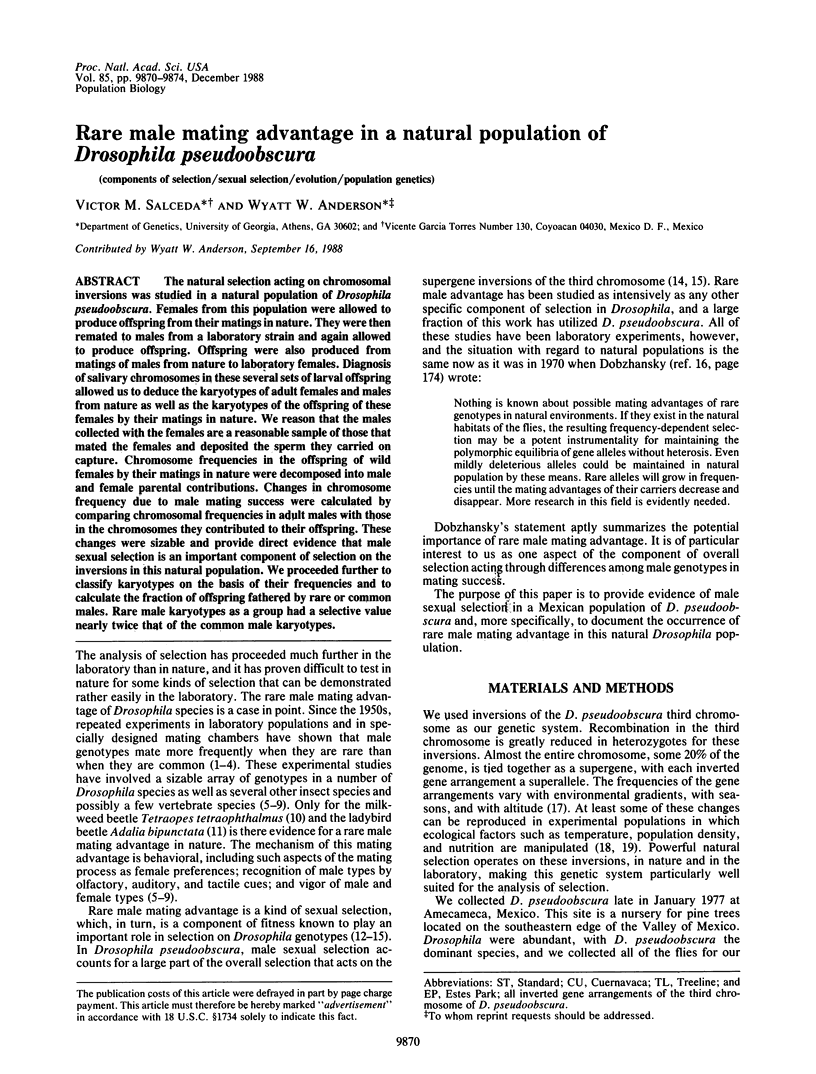
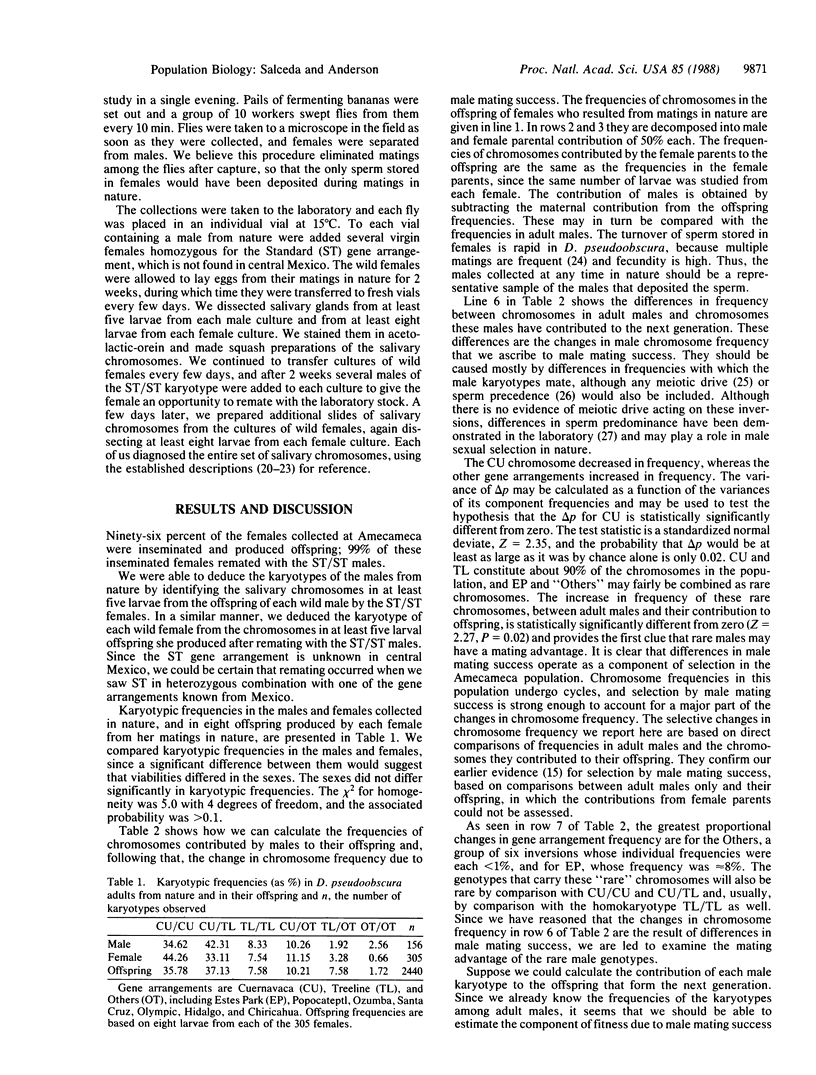
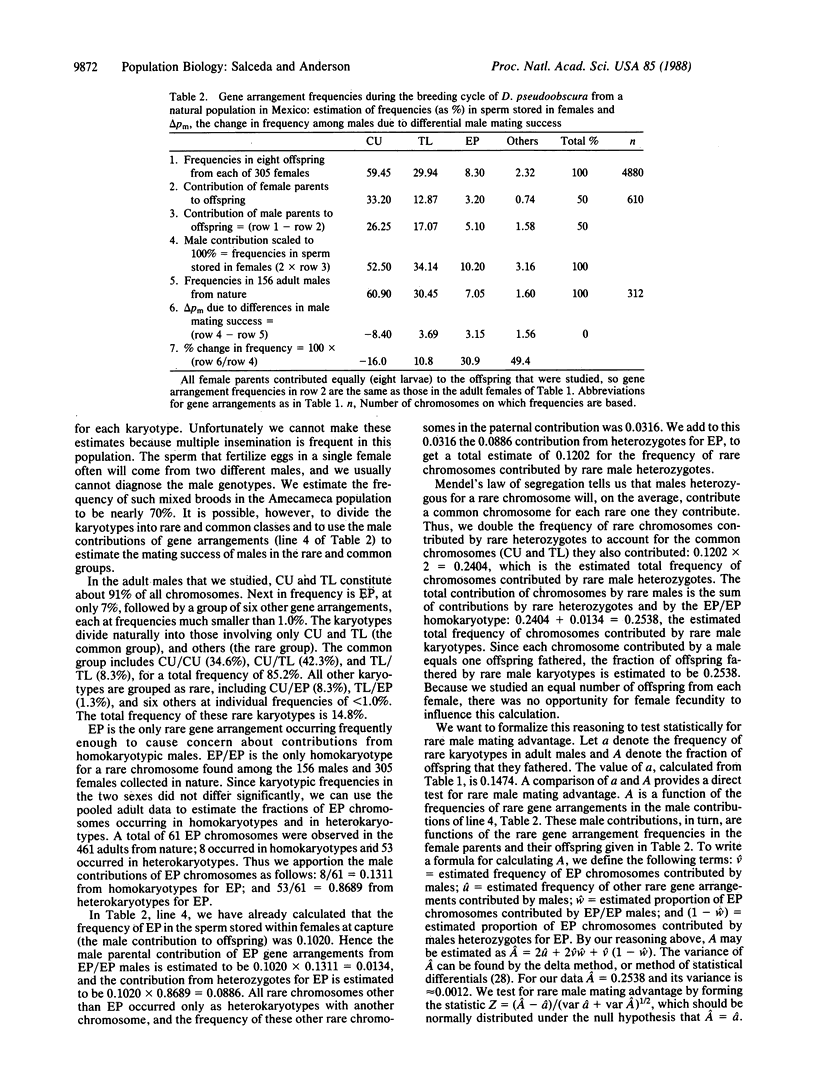
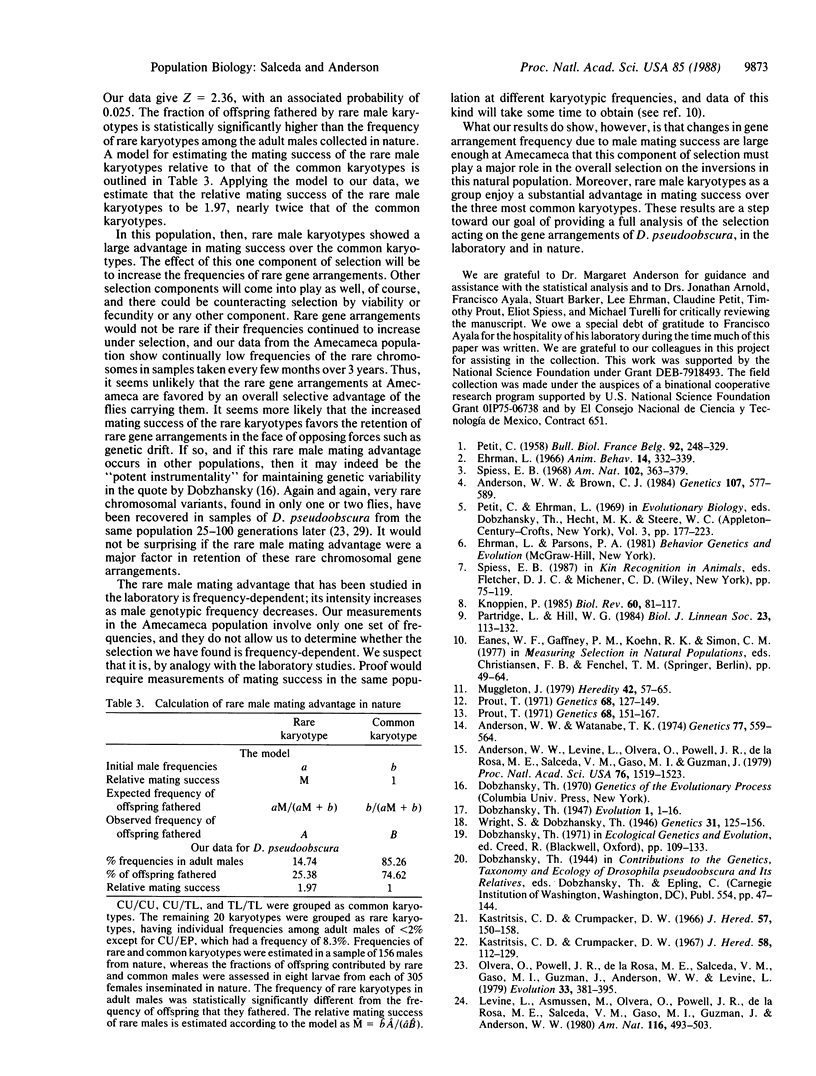
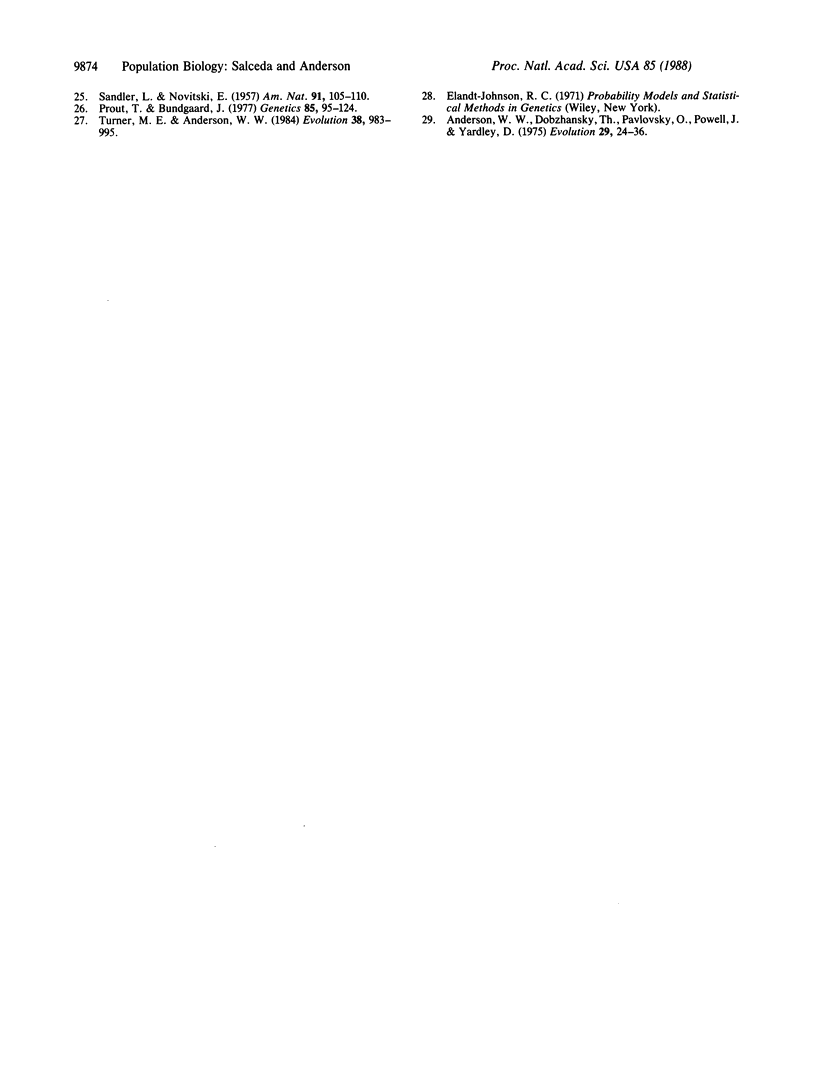
Selected References
These references are in PubMed. This may not be the complete list of references from this article.
- Anderson W. W., Brown C. J. A Test for Rare Male Mating Advantage with DROSOPHILA PSEUDOOBSCURA Karyotypes. Genetics. 1984 Aug;107(4):577–589. doi: 10.1093/genetics/107.4.577. [DOI] [PMC free article] [PubMed] [Google Scholar]
- Anderson W. W., Levine L., Olvera O., Powell J. R., de la Rosa M. E., Salceda V. M., Gaso M. I., Guzmán J. Evidence for selection by male mating success in natural populations of Drosophila pseudoobscura. Proc Natl Acad Sci U S A. 1979 Mar;76(3):1519–1523. doi: 10.1073/pnas.76.3.1519. [DOI] [PMC free article] [PubMed] [Google Scholar]
- Anderson W. W., Watanabe T. K. Selection by fertility in Drosophila pseudoobscura. Genetics. 1974 Jul;77(3):559–564. doi: 10.1093/genetics/77.3.559. [DOI] [PMC free article] [PubMed] [Google Scholar]
- Ehrman L. Mating success and genotype frequency in Drosophila. Anim Behav. 1966 Apr-Jul;14(2):332–339. doi: 10.1016/s0003-3472(66)80093-3. [DOI] [PubMed] [Google Scholar]
- Kastritsis C. D., Crumpacker D. W. Gene arrangements in the third chromosome of Drosophila pseudoobscura. I. Configurations with tester chromosomes. J Hered. 1966 Sep-Oct;57(5):151–158. doi: 10.1093/oxfordjournals.jhered.a107495. [DOI] [PubMed] [Google Scholar]
- Kastritsis C. D., Crumpacker D. W. Gene arrangements in the third chromosome of Drosophila pseudoobscura. II. All possible configurations. J Hered. 1967 May-Jun;58(3):113–129. doi: 10.1093/oxfordjournals.jhered.a107561. [DOI] [PubMed] [Google Scholar]
- Prout T., Bundgaard J. The population genetics of sperm displacement. Genetics. 1977 Jan;85(1):95–124. doi: 10.1093/genetics/85.1.95. [DOI] [PMC free article] [PubMed] [Google Scholar]
- Prout T. The Relation between Fitness Components and Population Prediction in Drosophila. I: The Estimation of Fitness Components. Genetics. 1971 May;68(1):127–149. doi: 10.1093/genetics/68.1.127. [DOI] [PMC free article] [PubMed] [Google Scholar]
- Prout T. The Relation between Fitness Components and Population Prediction in Drosophila. II: Population Prediction. Genetics. 1971 May;68(1):151–167. doi: 10.1093/genetics/68.1.151. [DOI] [PMC free article] [PubMed] [Google Scholar]


